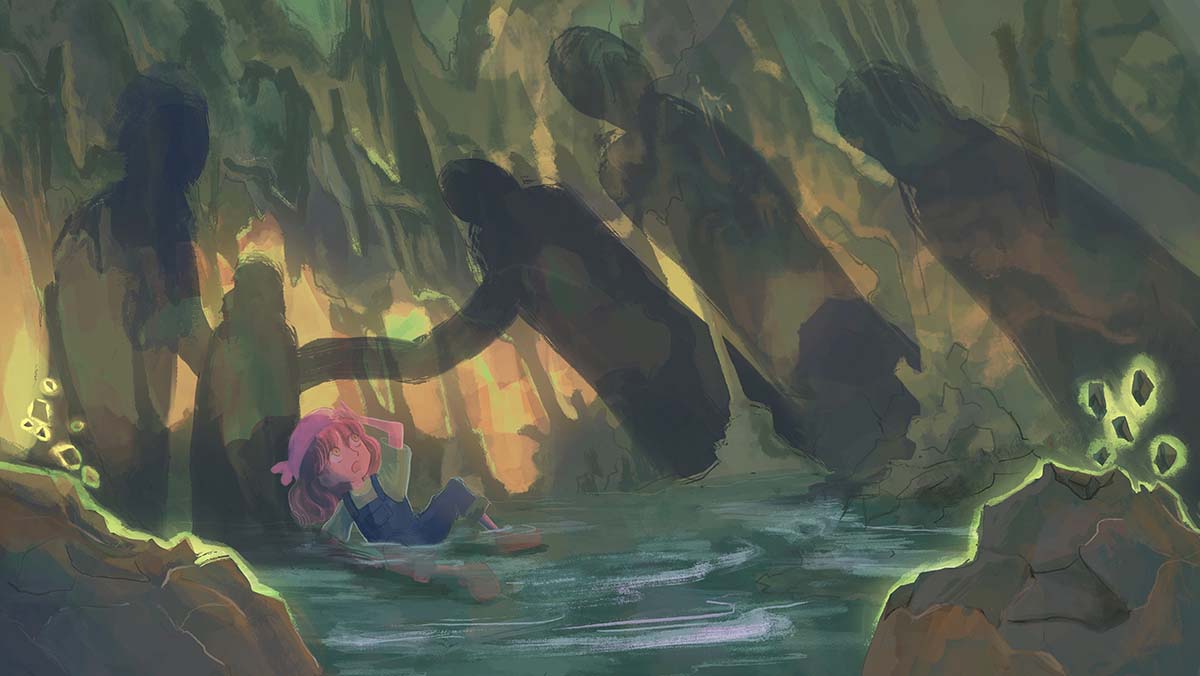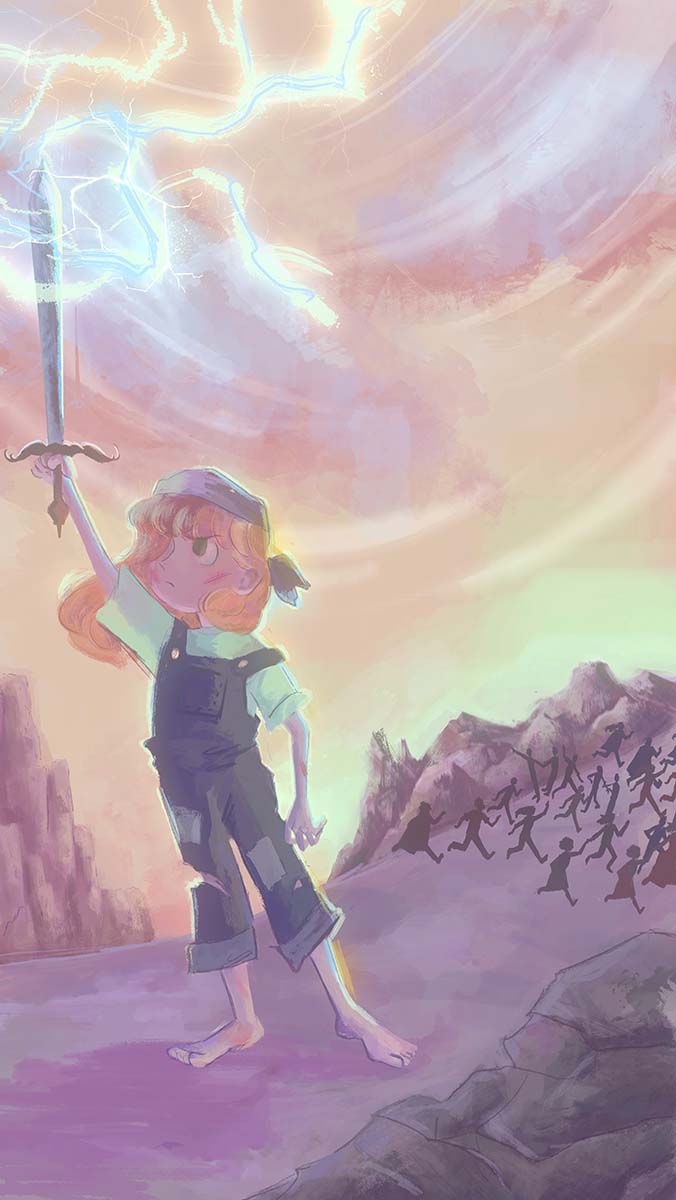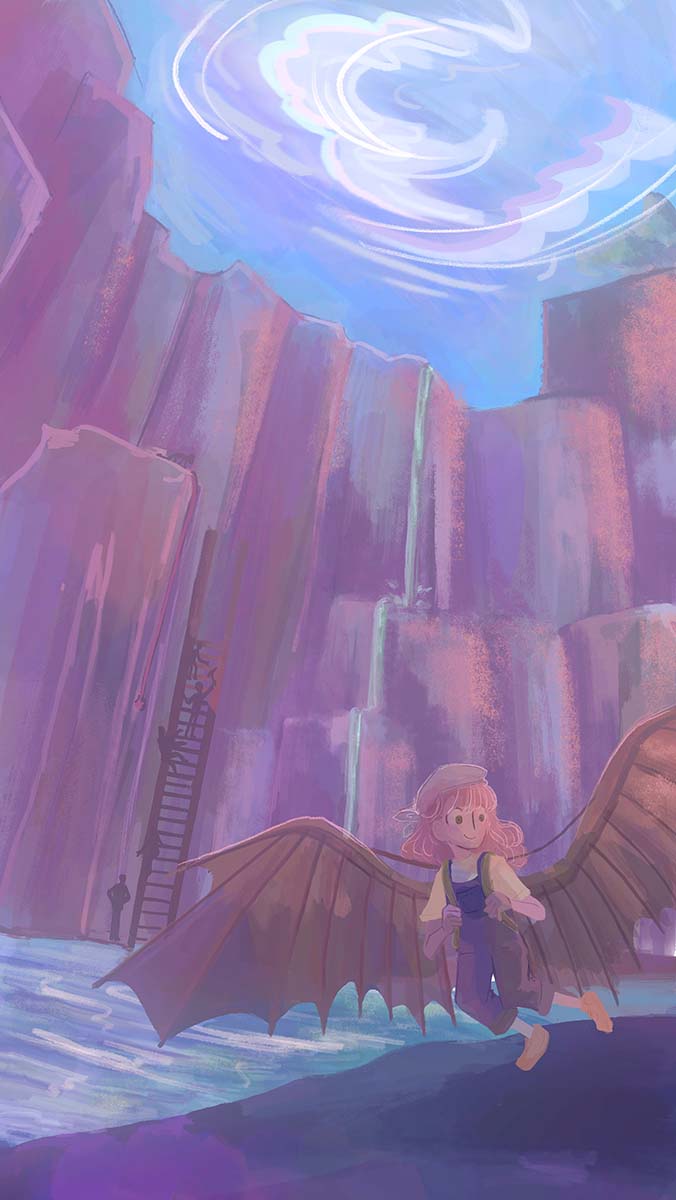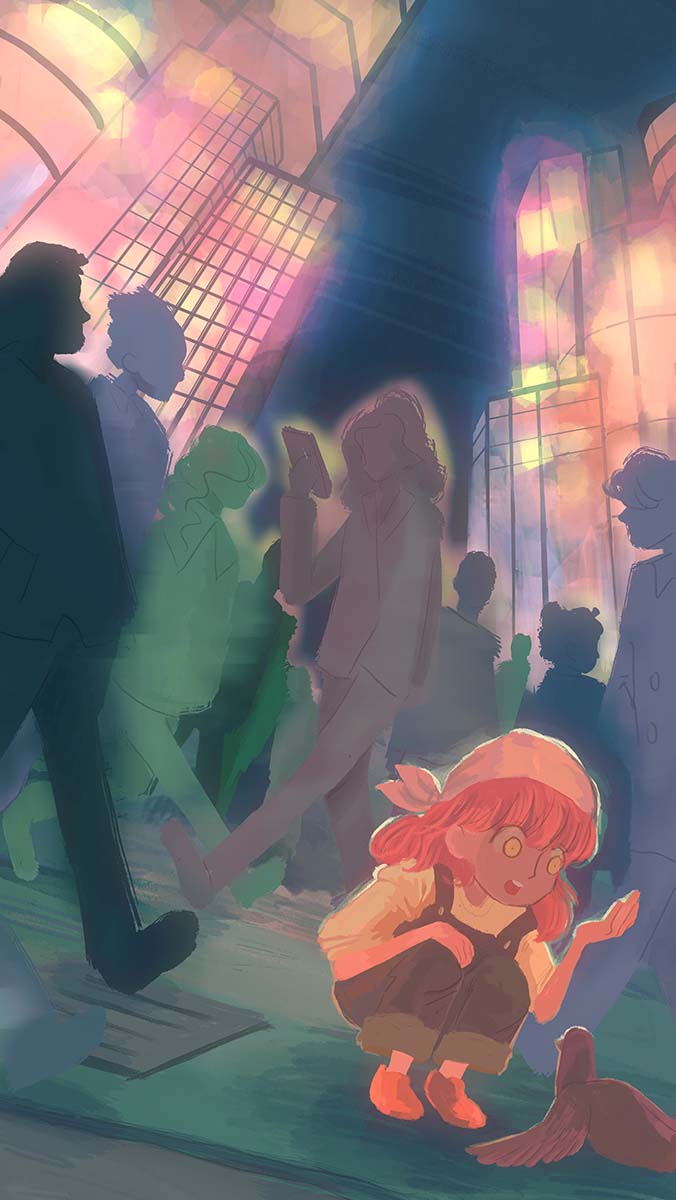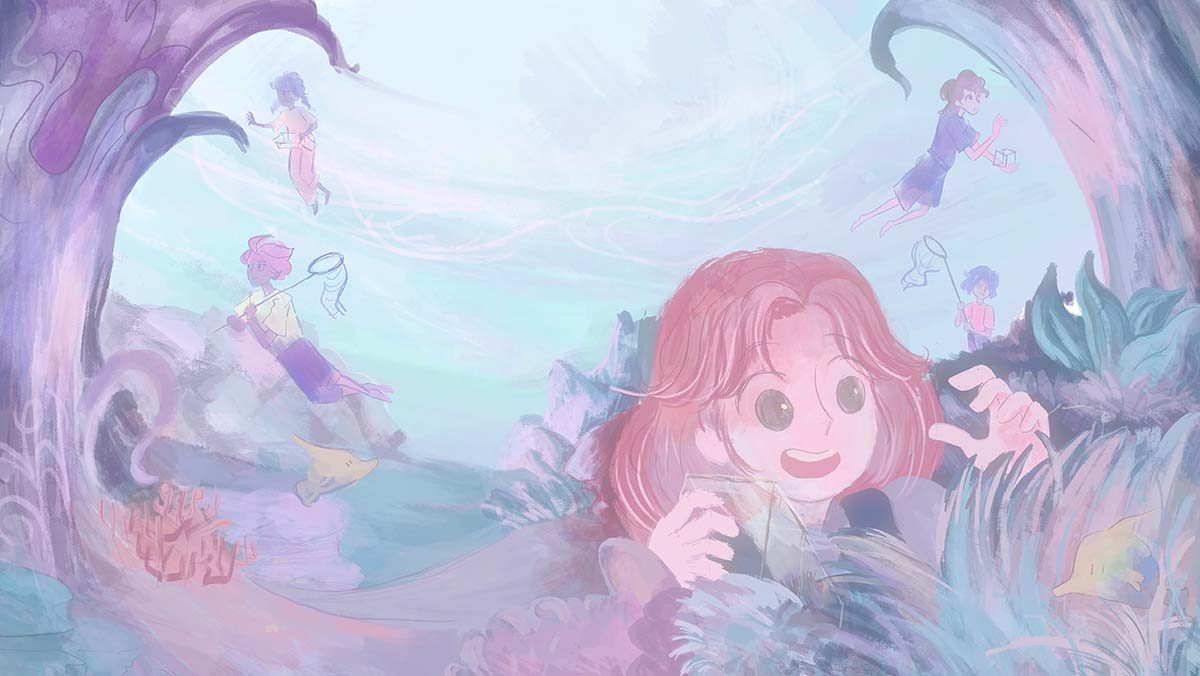Artist Statement
Conformity
The illustrated series, conformity, introduces the idea of how conformity impacts social relations. Throughout my illustrations, I want the audience to explore the situation with the main character who appears in every illustration. We all need to make better choices for ourselves, and the influence of others strongly impacts the decisions we make. I believe it is important to make the best choice for ourselves, not for others’ reputations or benefits. Being part of a group will allow us to perceive new perspectives or ideas, but at the same time, I believe it directs us to a single idea.
Throughout these illustrations, the main character is on a journey to explore the world. This is the direct connection to myself, struggling, exploring, and getting help in my journey towards an artistic career.
Connecting to my cultural background as Japanese, this issue was one of the social concerns I found different. After I learned social psychology in one of the general education courses, I connected the idea of conformity with Japanese people’s attitudes and thinking. We all have the freedom of making our choice, but we also have concerns about peer pressure. I believe Japanese people are unable to express their own ideas if they are in a group of people, such as in the workplace, school, or around family. As I was raised in Japan, I realized that we are generally often shy when we have a chance to take action or speak. I believe their attitudes are related to the idea of a collectivist country. Younger people are most likely to encounter peer pressure. We are often forced to agree to the ideas that others make, or we get ignored, bullied, or treated without respect. I found myself questioning why we all need to face the same direction and hide what we truly think. In modern society, we are starting to respect individual thinking, but I strongly believe agreeing with a group against our better judgement kills our independence. I want to express this idea because I realized that it happens to any country in any community or group.
The first illustration is about peer pressure. The spirits or ghostly shadow pulls the shadow of the main character into their world. The character is afraid to deny their offering because they are overpowering. Power is used to force the individual to comply against their wishes.
The other three are about individualism which is the counter idea of conformity. It shows the importance of breaking our boundaries to think or act differently from the groups’ ideas. The first image describes the main character standing against something while other people are running away from it. The other one is when the main character and the group are trying to aim at the top, but the group is building the stair while the main character trying to fly up. This shows the importance of finding another, yet successful way to aim the goal even if this is not what the group is doing. The last illustration depicts a scene where the main character is trying to help the pigeon in the middle of the metropolitan city. We see other people are busy and not giving attention to the pigeon. The main character had a choice whether to ignore it or not, but she chose to give it a hand. The final piece is when the character accepts the group. People around her are trying to catch a fish, and she is following the group. I want the audience to think about if the group influence is always important.
My work is in digital formats, with a gel medium painted on top of the printed piece. I incorporate the traditional painting techniques into the digital medium because I was inspired by many different art concepts. I work narratively by situating the figures in a setting to suggest storytelling. I used vibrant colours and depicted different actions and settings to showcase my skills as a visual development artist. I integrate different digital brushes and colours to depict realism into fantasy concepts so the audience will feel like they experience the same journey with the character both on the issue and throughout the setting. I want the audience to think of the whole piece as a series of scenes in the film.

